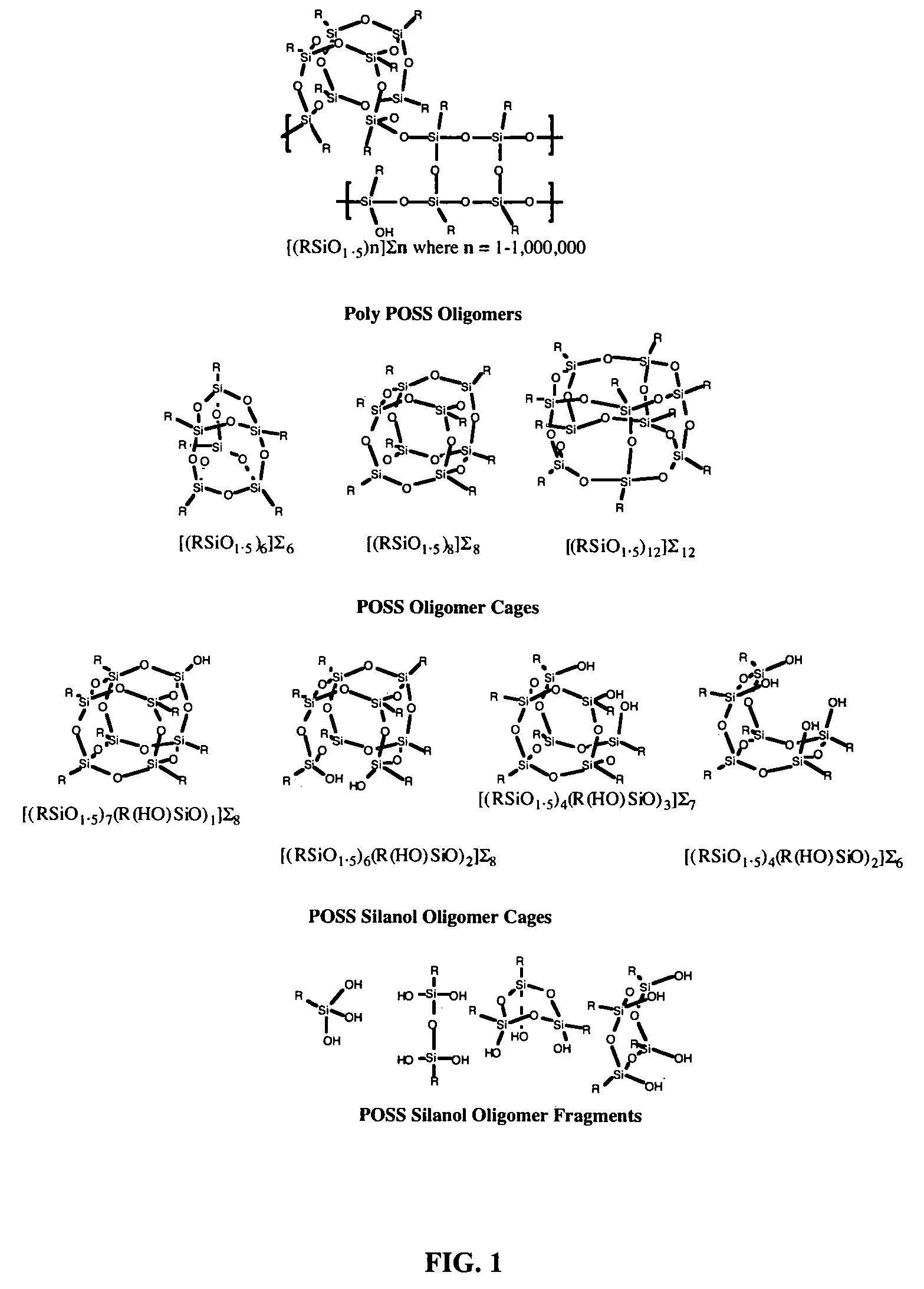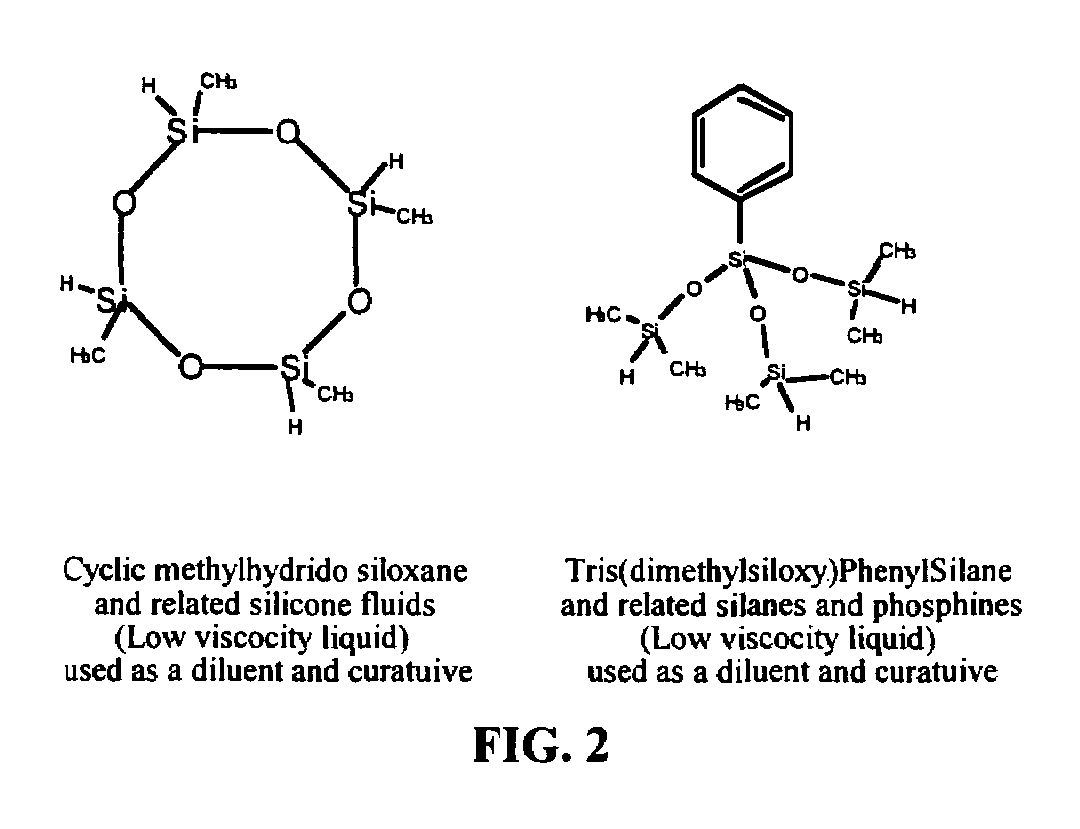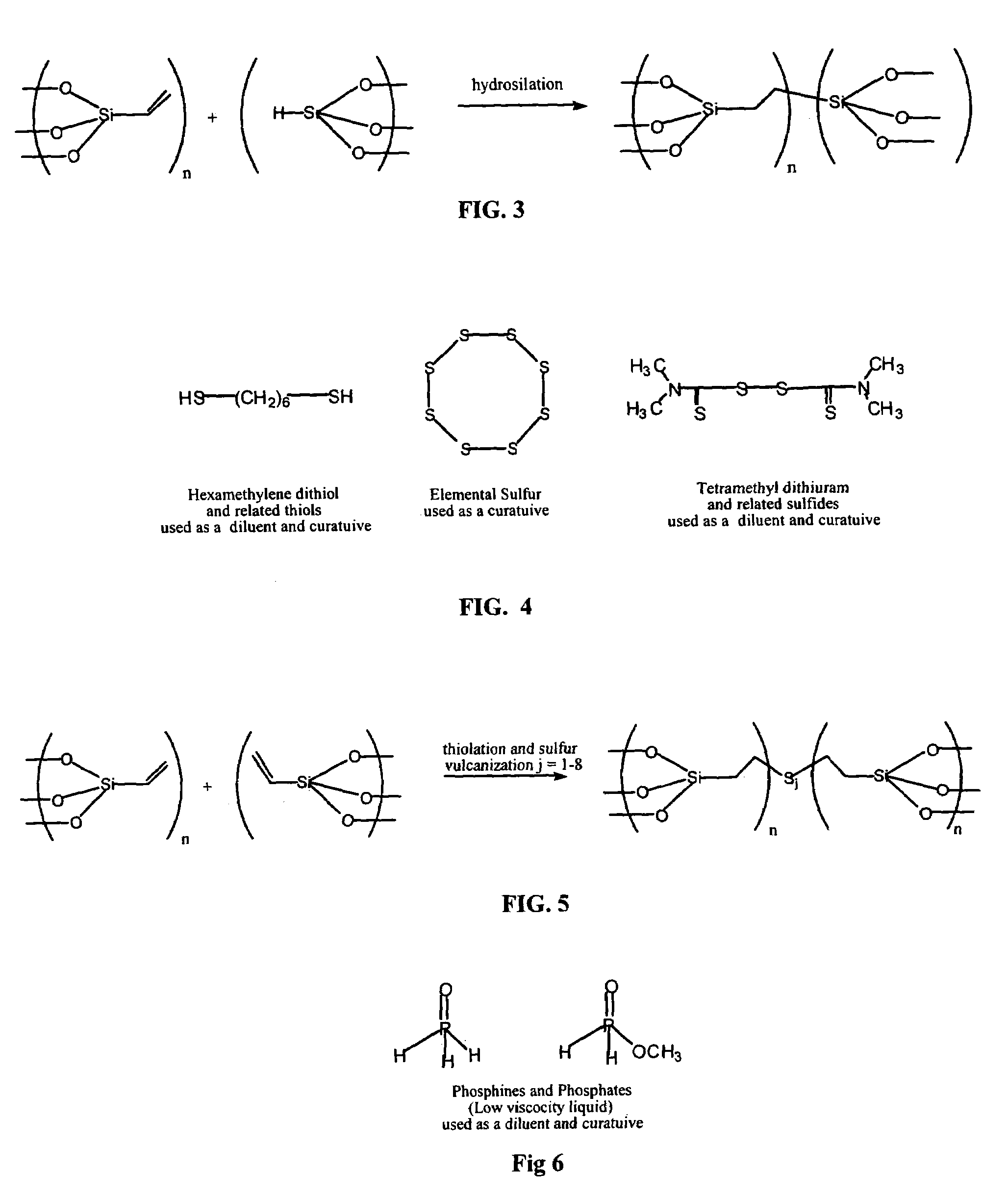High use temperature nanocomposite resins
a nano-composite resin and high-temperature technology, applied in the field of high-temperature thermoset polymers and fiber reinforced composites, can solve the problems of inability to control the length scale in all three dimensions, thwarted full application of theoretical knowledge, and complex process, etc., to achieve low viscosity, promote additional epoxy-amine crosslinking, and eliminate porosity
- Summary
- Abstract
- Description
- Claims
- Application Information
AI Technical Summary
Benefits of technology
Problems solved by technology
Method used
Image
Examples
example 1
Silane Cure Vinyl POSS Resin
Example 1a
[0050]A 70 g sample of vinyl POSS cage / resin mixture as stirred into 30 g of phenyltrisdimethlysiloxy silane. The mixture was heated to 60° C. to promote dissolution and then allowed to cure to room temperature. Then 3 ppm of a hydrosilation catalyst was stirred into the mixture. The resin was then cast and allowed to react at room temperature for 8 hours and subsequently heated to 60° C. for 4 hours and at 120° C. for 2 hours. An optically clear resin plaque was removed and found to have outstanding thermal and mechanical properties.
example 1b
Silane Cure of Viny POSS and Epoxy POSS Resin / Cage Mixture
[0051]A similar procedure to 1a was carried out using a resin consisting of a 85% vinyl POSS and 5% epoxy POSS. This was cured in a similar manner to 1a and was found to have nearly identical mechanical and thermal properties with improved adhesion to wood and polar surfaces including composite fibers. (Note that a range of vinyl and epoxy from 0.1 to 99.9% was found to be acceptable.) An additionally desirable feature of this resin is its optical clarity.
example 1c
Silane Cure of Vinyl POSS and Epoxy POSS Resin / Cage Mixture
[0052]A similar procedure to 1a was carried out using a resin consisting of a 80% vinyl POSS and 20% phenyl POSS. This was cured in a similar manner to 1a and was found to have improved fire resistance. (Note that a 0.1 to 99.9% relative range of vinyl and pehnyl was found to be acceptable. Optical clarity for this formulation was also found to be a desirable property.
[0053]Also tertiary mixtures of vinyl, phenyl, and epoxy were found to be favorable). For example the following range of vinyl POSS and phenyl POSS systems were determined to be of utility.
[0054]
ViSi(OMe)3PhSi(OMe)3EpCyEtSi(OMe)3Final Composition(mole %)(mole %)(mole %)PM1285-050280200PM1285-050275205PM1285-0508702010PM1285-0509652015PM1285-0510602020
Synthesis of PM1285-0510 Vinyl POSS Derivatives:
[0055]ViSi(OMe)3 (184.72 g, 1.246 mole), PhSi(OMe)3 (82.37 g, 0.415 mole) and EpCyEtSi(OMe)3 (102.19 g, 0,415 mole) were dissolve in MEK (1.5 L) and methanol (205 mol...
PUM
| Property | Measurement | Unit |
|---|---|---|
| length scale | aaaaa | aaaaa |
| radius of gyration | aaaaa | aaaaa |
| reptation diameter | aaaaa | aaaaa |
Abstract
Description
Claims
Application Information
 Login to View More
Login to View More - R&D
- Intellectual Property
- Life Sciences
- Materials
- Tech Scout
- Unparalleled Data Quality
- Higher Quality Content
- 60% Fewer Hallucinations
Browse by: Latest US Patents, China's latest patents, Technical Efficacy Thesaurus, Application Domain, Technology Topic, Popular Technical Reports.
© 2025 PatSnap. All rights reserved.Legal|Privacy policy|Modern Slavery Act Transparency Statement|Sitemap|About US| Contact US: help@patsnap.com



